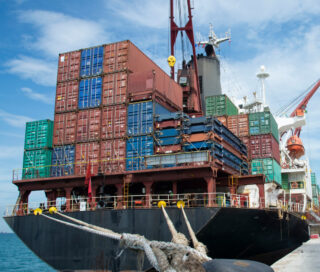Businesses Seek Predictability Amidst Higher Tariffs and Rates
May 19, 2025

QMS and cloud quality management systems enhance operational resilience
The global economic landscape has become increasingly unpredictable, with a standoff between higher tariffs and interest rates creating a bundle of uncertainty on businesses across various industries. This puts pressure on businesses to adapt quickly, optimize operations, and maintain profitability in the face of escalating costs and shifting trade policies.
An Alarming Untethering since January
Higher tariffs incentivize investors to flee stocks for the more predictable yields of government bonds. Investors in 2024 bought the 10-year U.S. treasury note for the most part at a less than 4% interest yield. That yield spiked as high as 4.79% this January, indicating the government had to guarantee a higher payout to bond buyers even though they were selling stocks to find safe haven from incoming tariffs. It’s an untethering that challenges historical patterns and conventional investing wisdom.
Typically, a stock selloff sends money into bonds with demand lowering the payout of those bonds. Both benchmarks rising shows that financial markets are not responding predictably, which introduces more uncertainty for business decisionmakers.
Higher Tariffs and Interest Rates
Higher tariffs mean more operational costs to procure raw materials. At the same time, higher interest rates increase the cost of borrowing. Manufacturers will pay more for business as usual to grow organically through taking their goods to market. They will also pay more to pursue growth accelerants and innovative bets, like acquiring other companies and investing in new product lines. No matter what a business does, costs are moving up.
As total costs go up, so will the final product. Prices will get passed through at the checkout counter and used car sales are telling this tale. The Manheim Used Vehicle Value Index tracks prices of used vehicles sold at U.S. wholesale auctions. The index increased 4.9% in April year-over-year and is at its highest point since October 2023.
A Signal Rates May Head Lower in 2H 2025
The 10-year U.S. treasury note yield retreated to 4.3% in early May. The marginal decline signals more confidence in America’s long term economic health. But, this faith gave Federal Reserve chair Jerome Powell breathing room to hold federal fund rates steady at the May 7 FOMC (Federal Open Market Committee) meeting instead of a rate cut that the President and many investors have advocated.
The Fed’s statement acknowledged, “Uncertainty about the economic outlook has increased further. The Committee is attentive to the risks to both sides of its dual mandate and judges that the risks of higher unemployment and higher inflation have risen.” While there was no May rate cut, the acknowledgement of negative economic signs could provide a soft landing for the Fed to cut rates eventually in 2025.
Higher materials and borrowing costs mean businesses need to control costs where they can. Technology in the forms of on-premises and cloud quality management systems and a total quality management (TQM) strategy give businesses tools and a framework for controlling costs without sacrificing standards.
✅ Quality Management Systems Contain Costs
A well-implemented QMS provides a fundamental framework to achieve operational predictability. The framework establishes documented processes, clear responsibilities, and a mechanism for continuous improvement—all of which builds better controls over costs, potential waste, and product quality. A QMS also facilitates a proactive approach to risk management. Businesses can identify potential vulnerabilities and take preventative actions before they snowball into costly problems.
✅ The Amplifying Power of Cloud Quality Management Systems
Cloud quality management systems take the benefits of a traditional QMS to the next level for businesses dealing with disruptions. These platforms centralize quality data and processes, making them accessible in real-time from anywhere with an internet connection. This enhanced accessibility fosters collaboration across departments and with external partners like suppliers. Advanced analytics and reporting tools provide deeper insights into performance trends and potential areas for improvement, which can optimize margins.
✅ Optimizing Operations and Supply Chains for Total Quality Management (TQM)
On-premises and cloud quality management systems optimize operations and supply chains. Together, they deliver the structure and tools for achieving total quality management. By streamlining data collecting and analysis, companies can identify inefficiencies, bottlenecks, and excessive costs, such as from suppliers in a higher tariff country. In this way, total quality management identifies opportunities to reduce waste, improve resource utilization, and find cost-effective alternatives.
QMS Builds Customer Trust in Volatile Times
Maintaining quality and compliance standards through QMS tools and a TQM strategy gives companies some stability even as costs rise and trade regulations fluctuate. A total quality management strategy underpinned by a robust QMS signals a company’s commitment to product quality and reliable supply chains. This helps build customer trust amidst market disruptions.
Learn how Intellect can help or contact us with questions.
